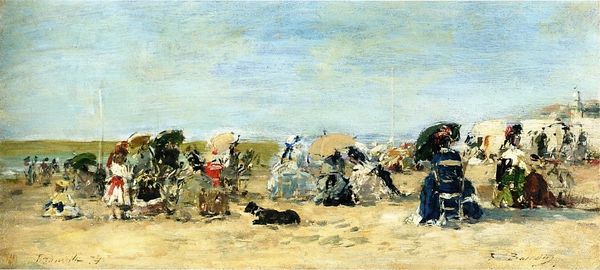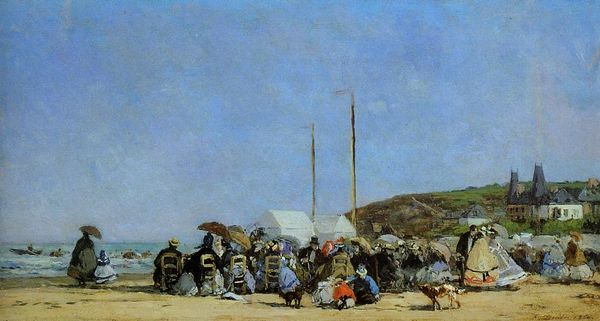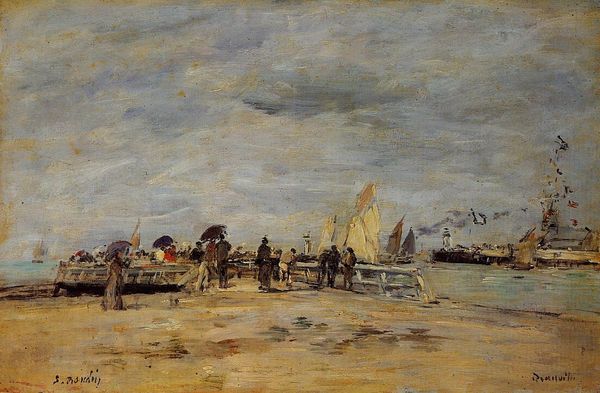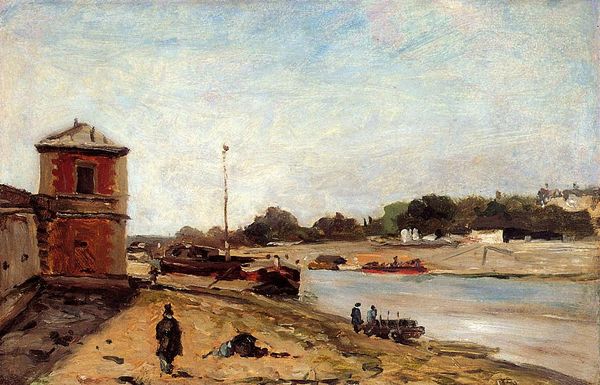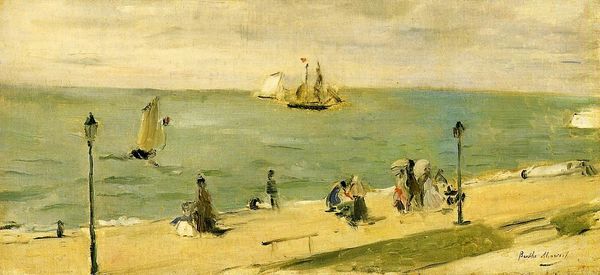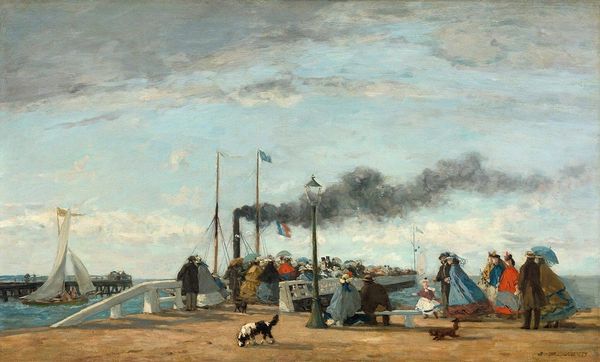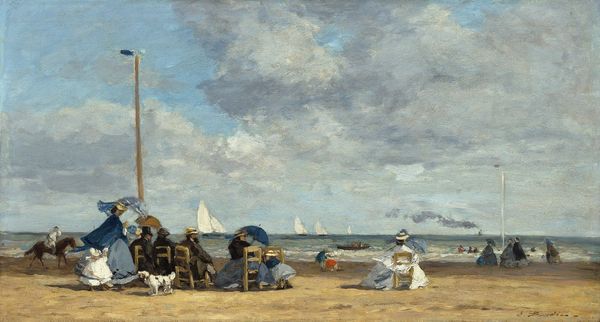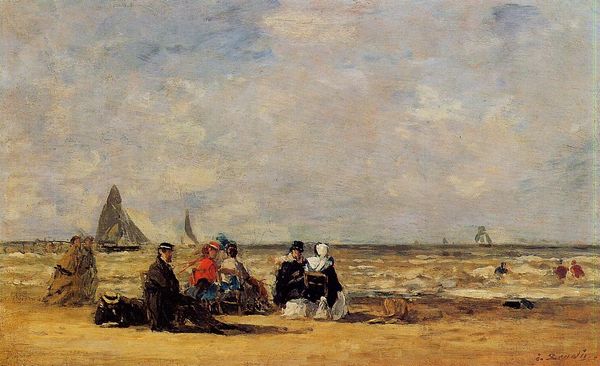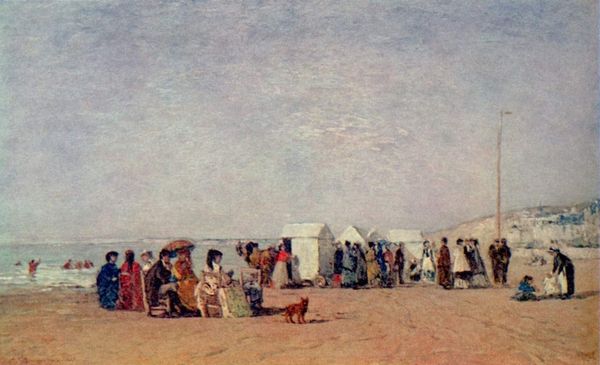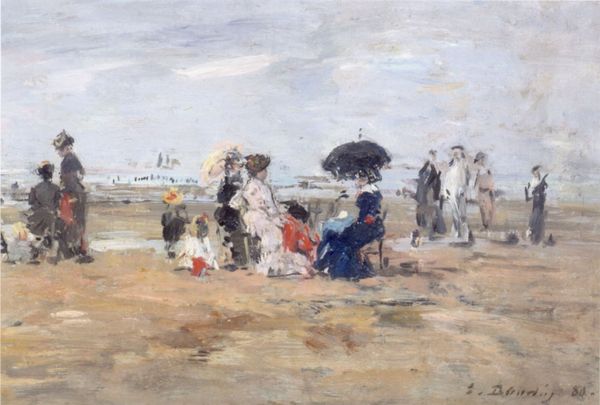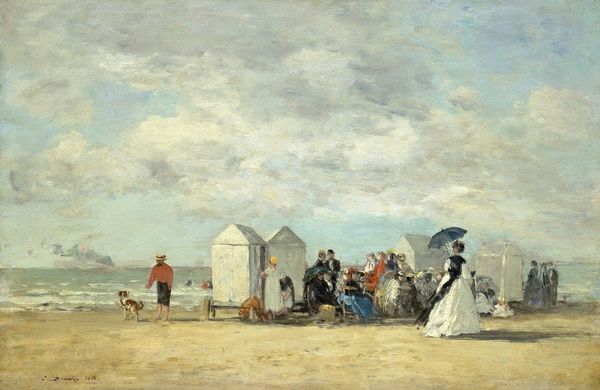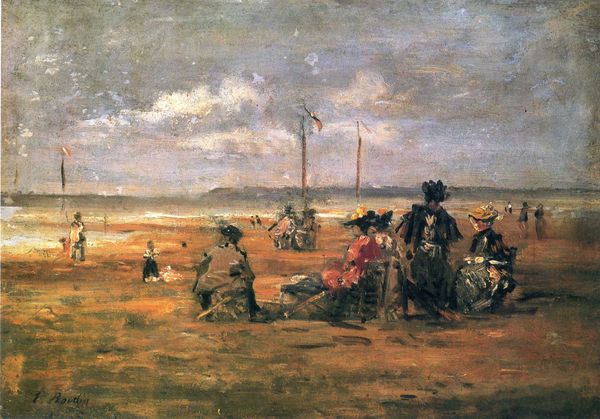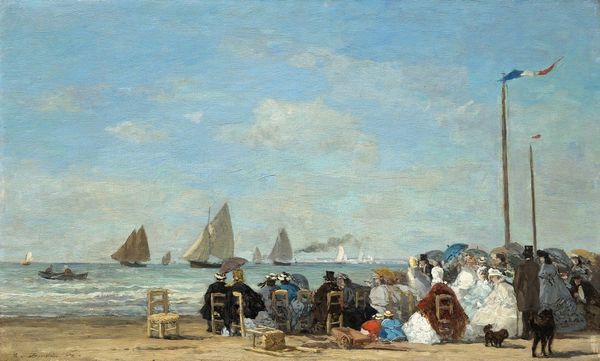
Copyright: Public domain
Editor: This is Eugène Boudin’s *Crinolines on the Beach*, painted in 1863. I'm struck by the muted tones; it feels both elegant and melancholic. What do you see in this piece? Curator: For me, this painting speaks volumes about the constructed nature of leisure and societal expectations, particularly for women in 19th-century France. These crinolines, while beautiful, also represent a kind of gilded cage. The beach wasn’t necessarily a place of liberation, but rather another stage upon which to perform bourgeois identity. Editor: That’s interesting, because I thought the beach offered an escape, a break from the rigid structures of city life. Curator: Well, consider the women themselves. Are they swimming or playing freely? No. They’re confined to their elaborate dresses, their movements restricted. Boudin is subtly critiquing the limitations imposed on women, even in spaces seemingly dedicated to leisure. What about the racial homogeneity in this picture? Editor: You’re right, there's a distinct lack of diversity. It makes you wonder about the unacknowledged labor and exclusion that enabled this scene of bourgeois relaxation. Curator: Precisely! And by noticing these details, we begin to understand the painting as more than just a pleasant beach scene. Boudin, perhaps unconsciously, documented a specific social reality defined by class, gender, and race. Editor: I'm starting to see the painting as less about a carefree day at the beach and more about the complex social dynamics at play. It really gives a new appreciation for the layers of meaning in what initially seemed like a simple landscape. Curator: Indeed, this artwork invites us to think about the unseen and unheard voices behind the scene and about historical constructs of seeing the world.
Comments
No comments
Be the first to comment and join the conversation on the ultimate creative platform.
